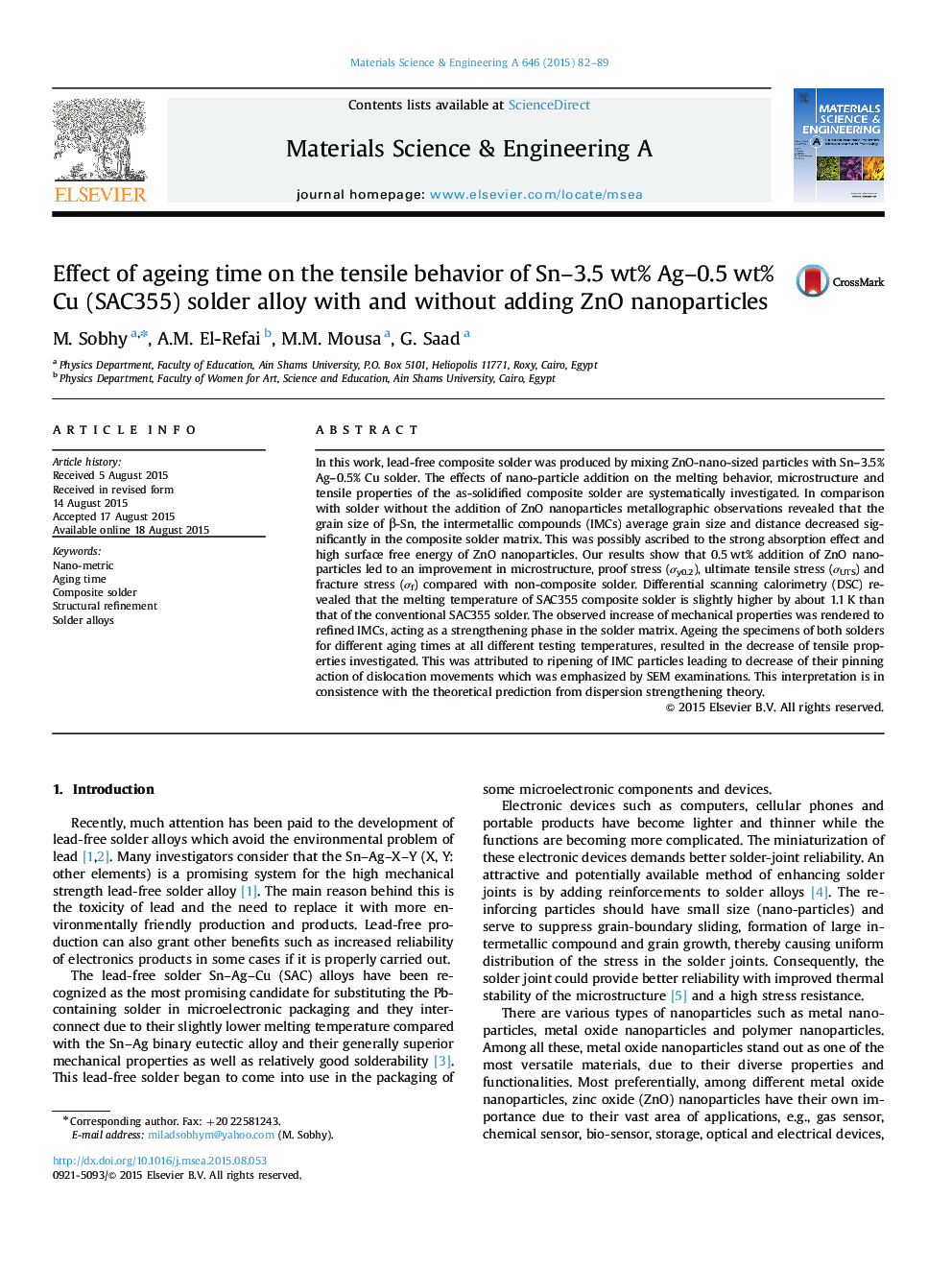| Article ID | Journal | Published Year | Pages | File Type |
|---|---|---|---|---|
| 1573857 | Materials Science and Engineering: A | 2015 | 8 Pages |
Abstract
In this work, lead-free composite solder was produced by mixing ZnO-nano-sized particles with Sn-3.5% Ag-0.5% Cu solder. The effects of nano-particle addition on the melting behavior, microstructure and tensile properties of the as-solidified composite solder are systematically investigated. In comparison with solder without the addition of ZnO nanoparticles metallographic observations revealed that the grain size of β-Sn, the intermetallic compounds (IMCs) average grain size and distance decreased significantly in the composite solder matrix. This was possibly ascribed to the strong absorption effect and high surface free energy of ZnO nanoparticles. Our results show that 0.5 wt% addition of ZnO nanoparticles led to an improvement in microstructure, proof stress (ơy0.2), ultimate tensile stress (ơUTS) and fracture stress (ơf) compared with non-composite solder. Differential scanning calorimetry (DSC) revealed that the melting temperature of SAC355 composite solder is slightly higher by about 1.1 K than that of the conventional SAC355 solder. The observed increase of mechanical properties was rendered to refined IMCs, acting as a strengthening phase in the solder matrix. Ageing the specimens of both solders for different aging times at all different testing temperatures, resulted in the decrease of tensile properties investigated. This was attributed to ripening of IMC particles leading to decrease of their pinning action of dislocation movements which was emphasized by SEM examinations. This interpretation is in consistence with the theoretical prediction from dispersion strengthening theory.
Related Topics
Physical Sciences and Engineering
Materials Science
Materials Science (General)
Authors
M. Sobhy, A.M. El-Refai, M.M. Mousa, G. Saad,
